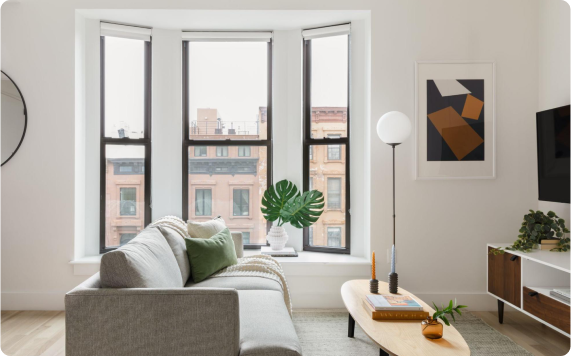
Vibrant, diverse, and perpetually in motion, the “city that never sleeps” is an exciting place to live and work. With hundreds of neighborhoods nestled into its five boroughs, there’s a place for everyone in NYC—the trick is figuring out how your desired lifestyle fits into the city itself.
New York is typically known as one of the more expensive cities in the US. That being said, its rental market is quite robust and packed with options. There are over 3 million occupied units in the city with plenty of turnover every month. Unlike most of the US, renters far outnumber homeowners—just over 2:1.1
Prepare for your NYC housing search by checking off this list of rental requirements:
Depending on your income and the price of your New York City apartment, you may also need all the same documents for a guarantor, who can “guarantee” your rent if you don’t qualify on your own.
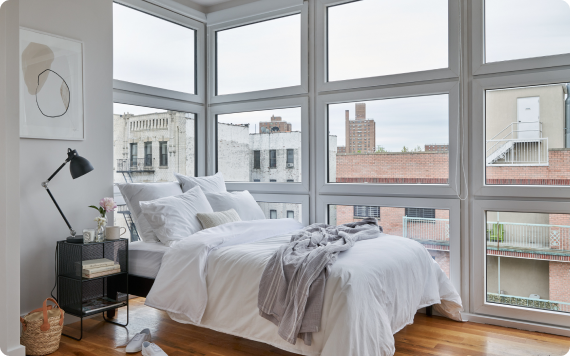

The average price for renting a studio apartment in the New York metro area currently sits at approximately $2,580/month.2 From single rooms in fully-furnished, shared apartments can have rent prices around $1,000/month to entire townhouses for twenty times that amount, NYC can undoubtedly cater to your unique situation (if you explore your options carefully).
With the high rental costs in NYC, it’s especially important to establish a rock-solid budget and stick to it. Here’s a widely accepted rule to base your budget on: your monthly rent should be equal to (or less than) one-fortieth of your annual income. If you can’t quite make that equation work, it’s still possible to rent—you may need to bring a guarantor into the mix or adjust your location, number of roommates, and desired amenities.
While rent may be the largest portion of your monthly expenses, there are other costs you’ll need to cover too: utilities, insurance, furniture, transportation, WiFi, laundry, food, and fun. Certain housing situations will include amenities to help offset these costs. For instance, Common’s New York City coliving homes come fully-furnished with utilities, on-site laundry, household essentials and WiFi already included. You’ll also find buildings with gyms, community lounges, coworking spaces, rooftop decks, and more.
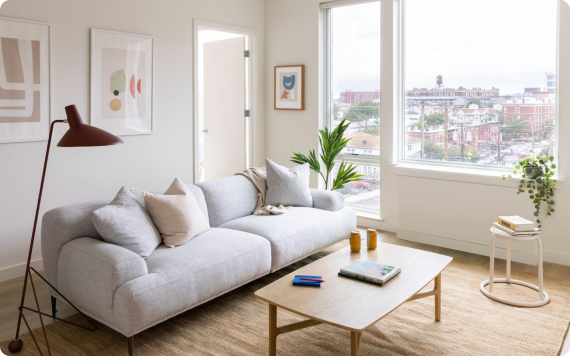

1. Give yourself plenty of time (but not too much)
2. Make a list of must-haves
3. Prepare your budget and documents
4. Tour in person
5. Recruit some assistance
6. Keep an eye out for scams
7. Stay on your toes
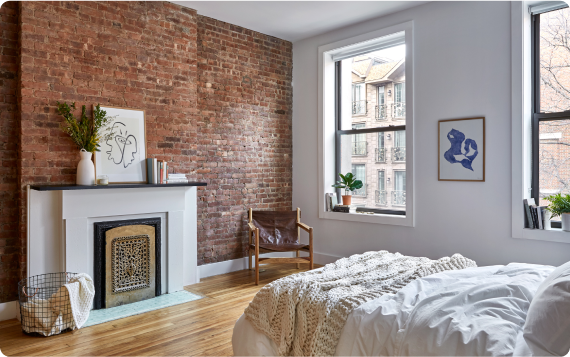

Each of New York City’s boroughs contains a variety of neighborhoods. Explore a variety of neighborhoods (online and in person) to discover the areas that you’re most drawn to. Here’s a short primer to get you started:
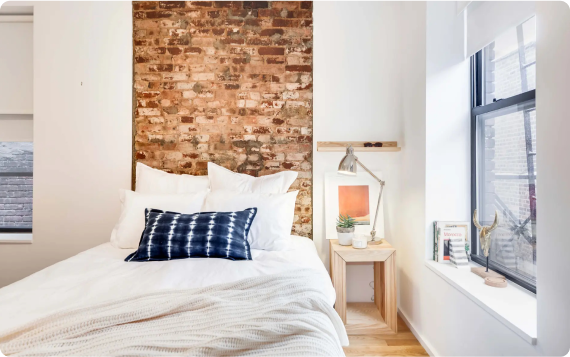

There are two separate governing programs for rental pricing in New York City: rent control and rent stabilization.
Make sure to research the buildings you’re considering to see if they fall under rent control or rent stabilization. Rent stabilization is the more widely available program, so keep your eyes peeled for that in particular.


At Common, we understand how stressful renting can be. We’re on a mission to ease the strain for young professionals finding their footing in a new city. Our comfortable, community-focused rentals are changing the rental industry at its core.
Forego the headaches and the heartaches that can come along with renting in NYC—rent with Common to discover a better way to come home. Our coliving homes and private studios and apartments are intentionally designed to make life easy for our members. With tech-powered management practices, lower monthly rent, exclusive community events, design-forward furnishings, incredible amenities and utilities included (trash, gas, electricity, water, and even WiFi), enjoy a higher quality of life for less with Common.
Scroll through our available listings and see what catches your eye. Then, reach out to our team and schedule a tour—we’ll be delighted to show you around.